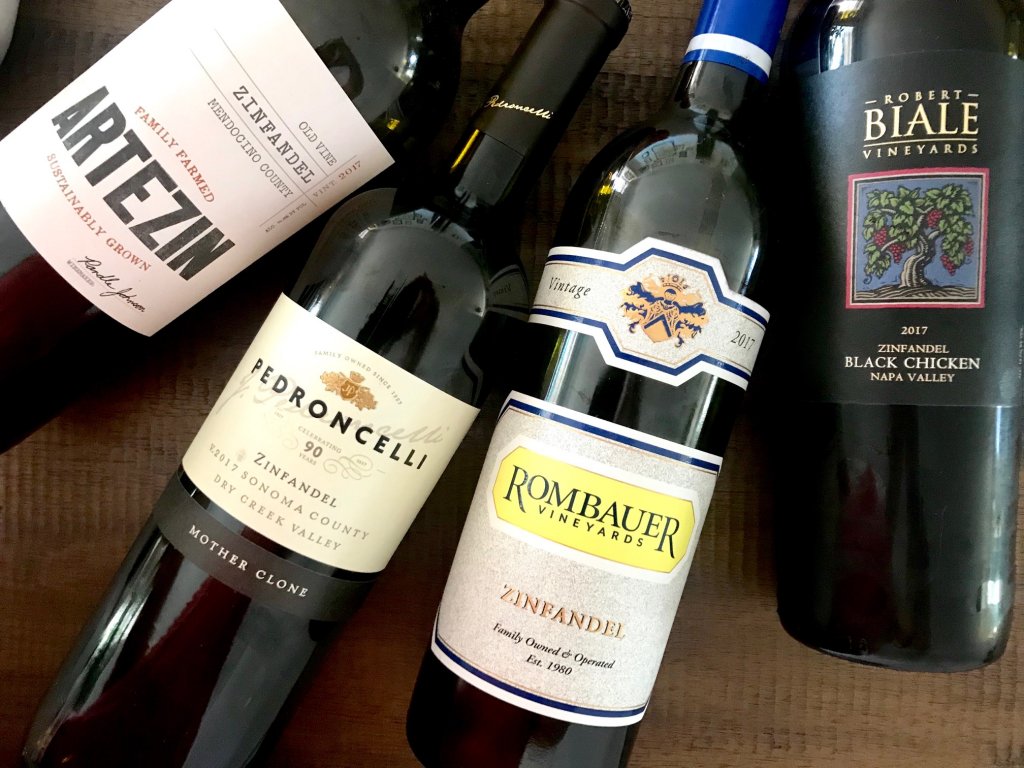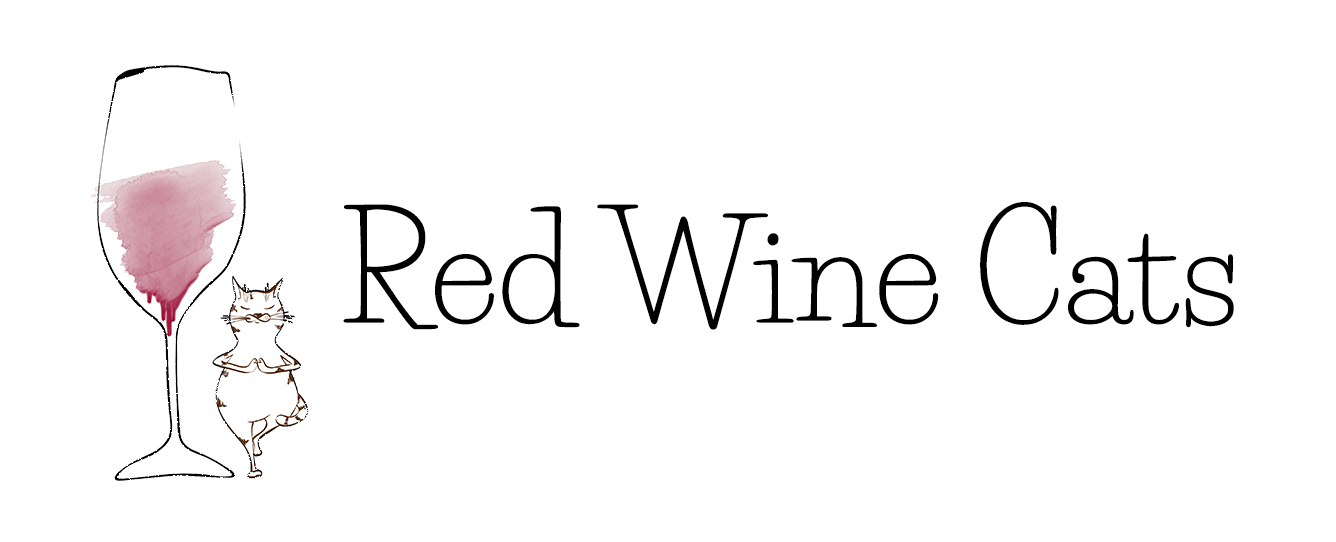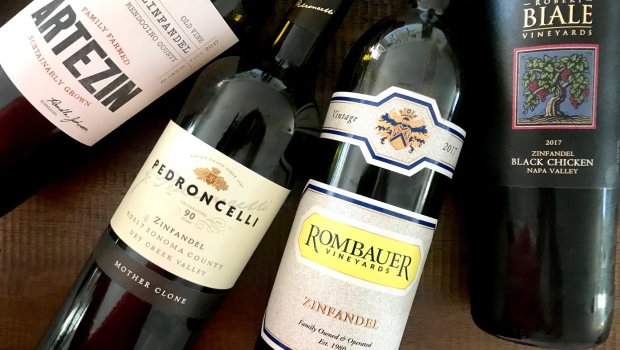Zinfandel is one of those wines I’ve always had either a big love or strong dislike relationship with. Many years ago, when I first tried Zin, I came across inexpensive grocery store bottles that tasted like cooked, grape stew jam. Then there was the sweet White Zinfandel craze, which many of the unenlightened still (unfortunately) associate with this grape. We’ve all seen the funny “Friends don’t let friends drink White Zinfandel” shirts, although, I’m sure in today’s market there are some great versions out there. And, if you like White Zin, you should guzzle that sweet juice if you want to.
“Part of the consumer hesitance lies in the multiple personalities Zin has shown over the years. It’s been made red, white, rosé, sweet, dry, late-harvest (“Port”) style, Beaujolais-style and even sparkling.” ~ Wine Enthusiast
Zin, a true love
As with any style of wine, there are multiple factors involved in terms of what makes it considered good or not — where and how the grapes are grown, the quality, producer, winemaker, is it created well or meant for bulk consumption? In the right hands, when done right with bright fruit, complexity, and balance, Zindandel (or simply, “Zin”) is a true love.
“It’s one of those wines (Zinfandel) that guests don’t typically ask for, but when we pour it for them, they absolutely love it,” ~ Cara Patricia, Sommelier
Zindandel is one of the oldest wine grapes in the world, dating back to 6,000 B.C., where it was genetically identified as being an ancient varietal related to Croatia’s Crljenak Kaštelanski, as well as Italy’s Primitivo. It’s also affectionately known as America’s heritage grape, and is the third most planted grape in California. Old vines, planted in the late 1800’s have been cared for and protected by organizations like ZAP, Zinfandel Advocates and Producers, dedicated to the preservation, education, and appreciation of all things Zinfandel.
“The Heritage Vineyard brings all of us together as scientists, farmers, artists, and historians. Ultimately, this research will help us discover answers to some of the mysteries surrounding Zinfandel, and preserve the special qualities of the old vines for future generations.” ~ Rebecca Robinson, Executive Director, ZAP
Four Zins to Love
Good news for delicious red wine lovers, there’s a lot of Zinfandel to choose from. Two of the four examples listed below, I’ve personally purchased and tried in the past and loved. I recently participated in a National Zinfandel Day appreciation tasting and chat hosted by Robert of The Larsen Projekt. Along with Rombauer Vineyards, Artezin, Pedroncelli, Robert Biale Vineyards, and other wine enthusiasts and writers, we sampled the four following wines, and I can’t recommend each of them enough.
Artezin Zinfandel 2017
Artezin, out of Mendocino County, is a label I often go back to when I’m in the mood for Zin. It’s in a great price range, I can find it fairly easily, and it’s always an easy drinker. I even found Artezin up in Payson, Arizona at Safeway (Von’s in California), and was happy to see it there, as it was a matter of convenience buying wine there while picking up groceries for my mom. When I see this label I always know it’s going to be good for the price.
“Ask our winemaker Randle Johnson, “Why Zinfandel?” and he will tell you, “Because this stuff is awesomely cool.” ~Artezin Wines
Randle Johnson has been the winemaker at Artezin since its beginning in 2002, and he’s clearly passionate about his wine. Their 2017 has a luscious full body, full of blackberry jam and dried herbs, all in harmony with nice acidity and moderate tannins.
- Sustainably grown
- 85% Zinfandel, 15% Petite Sirah
- 14.8% ABV
- 100% Barrel Aged, 1-2 year old French oak
- $18
Pedroncelli 2017 Mother Clone
This is my first time trying Pedroncelli’s Zin, and their Mother Clone from historic vineyards in Dry Creek Valley is a decadent sipper. Vines are hand-picked, and head-pruned, with a second generation vineyard cloned from the original “Mother” vines planted in 1904. Individual blocks were replanted in the early 1980’s, and some fruit from the remaining 110-year old vines were included. Great bold fruit, full-bodied, ripe mixed berries, with a hint of vanilla and herbs… super aromatic. The Petite Sirah gives it an even richer texture and opacity in the glass.
- Certified California Sustainable
- 81% Zinfandel, 19% Petite Sirah
- 15% ABV
- Aged 12 months in American Oak, 30% New Oak
- $19
“Our winemaker Montse picks on acidity rather than sugar/ripeness. The goal is balance in fruit as well as structure. She once quipped, we make spice bombs not fruit bombs.” ~Pedroncelli Winery, via Twitter chat
Rombauer Zinfandel 2017
Just recently I saw this bottle at a local Whole Foods. Good to know, as it’s a bottle I’d gladly revisit. So much ripe fruit, big blackberry and blueberry jam it almost has a hint of sweetness. Sprinkled with fine white pepper, this was such a nice, easy sipper. The higher ABV didn’t bother me at all, as it had a really decent balance of acidity and wonderful finish.
“A lot of people make excuses for wine, say ‘Well, this will be good in 10 years’ … I decided, ‘Why not make it taste good right off the bat?’ ” ~ Koerner Rombauer, on the genesis of the Rombauer Vineyards house style
Koener and Joan Rombauer established their winery in Napa in 1980, and is now in the hands of second and third-generation family members. Who remembers the iconic cookbook, The Joy of Cooking? Turns out, Irma Rombauer, the author, is Koerner’s great-aunt. Sadly, they’re both no longer with us, but we can still celebrate their name through this beautiful wine.
- 95% Zinfandel, 5% Petite Sirah
- 15.9% ABV
- Cold soaked, extracted color before primary fermentation
- Aged 16 months in American Oak (10% New) and French Oak
- $35
Robert Biale Vineyards 2017 Black Chicken
Doesn’t the name alone, Black Chicken, make you want to buy this bottle? Just me? I was recently at Bandera in Scottsdale, saw this bottle on the menu, and had to order it. I was pleasantly surprised by the complexity and acidity. Beautiful red fruit, cherry, raspberry, and dried herbs. The acidity makes this seem much lighter than it is. Full bodied, with a bright, but balanced texture. Winemaking begins in the vineyard with meticulous monitoring by Bob Biale and winemaker Tres Goetting.
“I love Zinfandel because it is a mysterious varietal that never ceases to amaze.” ~ Winemaker Trester “Tres” Goetting
- 100% Napa Valley Zinfandel
- 14.5% ABV
- Oak Knoll District
- Hand-picked and sorted
- Cold soaked, 100% Burgundy oak barrels, 20% new
- Barrel aged for 14 months
- Minimalistic vinification
- $49
The name, Black Chicken, was code for ordering a jug of bootleg wine back in Prohibition days. There’s a rich history in the name and family behind Biale’s wine, including a party line and deliveries in Aldo Biale’s 1940 Studebaker. Please visit their website to read more, it’s really interesting!
If you happen to purchase any of these, let me know what you think! Cheers!


